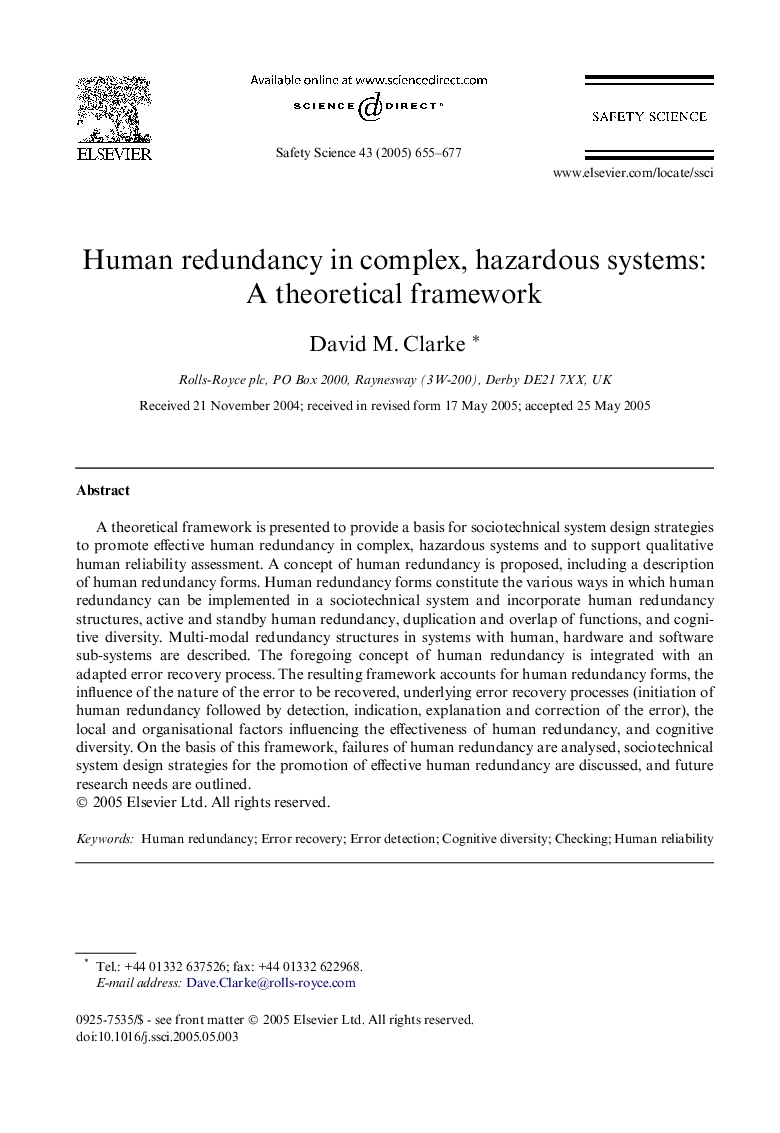| Article ID | Journal | Published Year | Pages | File Type |
|---|---|---|---|---|
| 10374338 | Safety Science | 2005 | 23 Pages |
Abstract
A theoretical framework is presented to provide a basis for sociotechnical system design strategies to promote effective human redundancy in complex, hazardous systems and to support qualitative human reliability assessment. A concept of human redundancy is proposed, including a description of human redundancy forms. Human redundancy forms constitute the various ways in which human redundancy can be implemented in a sociotechnical system and incorporate human redundancy structures, active and standby human redundancy, duplication and overlap of functions, and cognitive diversity. Multi-modal redundancy structures in systems with human, hardware and software sub-systems are described. The foregoing concept of human redundancy is integrated with an adapted error recovery process. The resulting framework accounts for human redundancy forms, the influence of the nature of the error to be recovered, underlying error recovery processes (initiation of human redundancy followed by detection, indication, explanation and correction of the error), the local and organisational factors influencing the effectiveness of human redundancy, and cognitive diversity. On the basis of this framework, failures of human redundancy are analysed, sociotechnical system design strategies for the promotion of effective human redundancy are discussed, and future research needs are outlined.
Related Topics
Physical Sciences and Engineering
Chemical Engineering
Chemical Health and Safety
Authors
David M. Clarke,
